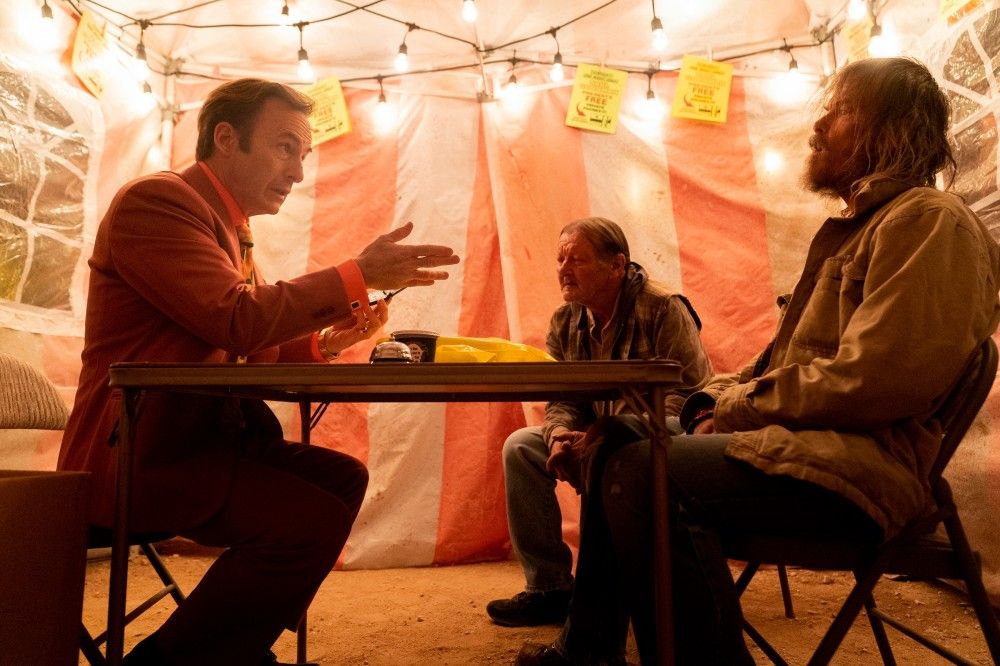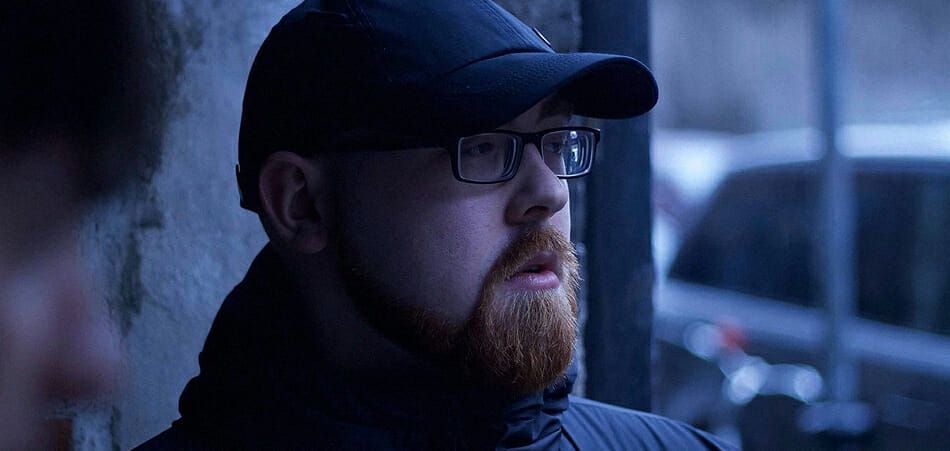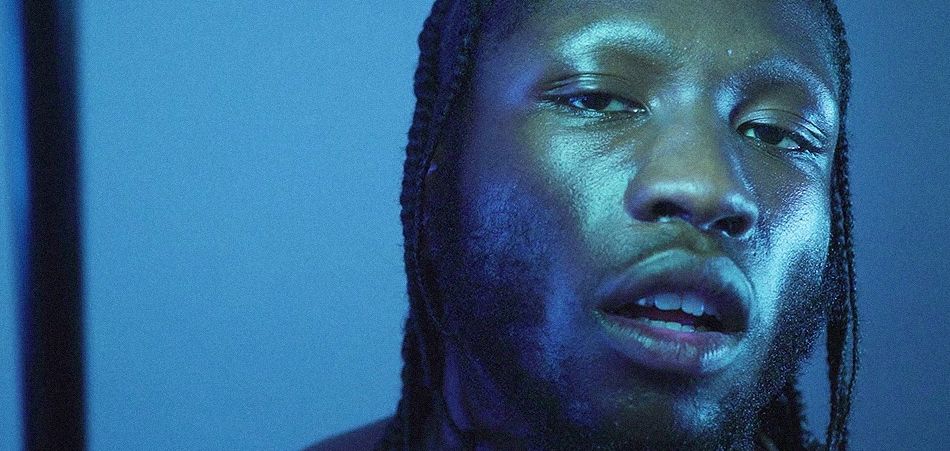
'Better Call Saul' Season Premiere Recap: 'Magic Man'
is back for its fifth season. A review of the premiere, “Magic Man,” coming up just as soon as I hear good things about the new vending machine over by family court…
“See, this is why this works. I go too far, and you pull me back.” -Jimmy
Jimmy McGill.
Saul Goodman.
Gene Takovic.
One man, three names. Or is it three different men rightly using three different names?
Going back to when we first met Saul on , has played the character under multiple aliases. (And that’s not even counting “Viktor with a K,” Jimmy’s moniker whenever he and Kim/Giselle run a short con together.) This prequel series began with poor Gene trudging through his lonely, paranoid days at Cinnabon, then introduced us to Jimmy McGill, who turned out to be something more complicated than a pre-combover Saul Goodman. Though he eventually began using Saul Goodman as a work name while producing commercials and selling drop phones, he was still clearly the Jimmy we had come to know and love. It wasn’t until midway through last season that we briefly saw the true Saul Goodman, frantically preparing to exit his Albuquerque life near the end of the events of Breaking Bad.
So what separates these three, exactly? How much does it matter? And when will Jimmy McGill fully become Saul Goodman in this series’ present?
Gene is easy to carve off from the other two. He values survival above all else, and has divested himself of anything that might get him identified as Saul or Jimmy, even though those character traits were what once made his life worth living. We only glimpse him for a few minutes at the start of each season, but we can see how painfully empty his time in Omaha has become, and how simultaneously thrilled and terrified he feels whenever he lets one of his old identities slip out for a moment.
Saul, we know relatively well from his time on Breaking Bad. As Odenkirk has pointed out, we only saw the guy when he was involved in Walt and Jesse’s business, meaning it’s entirely possible that he went home to the wonderful Kim Wexler every night. But it doesn’t really seem that way, does it? The Saul Goodman we meet in Breaking Bad Season Two is a blithely ruthless individual, willing to sell out anyone and everyone who threatens him, and baffled that his most important clients aren’t prepared to do the same. He’s not a monster to the degree that Walt or Tuco or Gus are, but he is someone who fundamentally cares about getting and keeping what he feels entitled to above anything else. He is a fairly two-dimensional (if very entertaining) character, and those dimensions are extremely selfish ones.
Jimmy, though? Jimmy contains multitudes. He is a survivalist like Gene, and has done some terrible things in the name of self-preservation (and, occasionally, in the name of protecting people he cares about like Kim). And he is a con man at heart like Saul, often finding his greatest pleasure in getting over on his social superiors. But he’s also more empathetic and fundamentally kinder. He took genuine pleasure in talking with his eldercare law clients. He was a devoted caretaker to Chuck, despite how obviously his brother disapproved of him. His instincts still trend towards chicanery and other shortcuts, but there is a capacity for goodness and shame in him that’s utterly absent from Saul on Breaking Bad.
Throughout the run of Better Call Saul to this point, it’s been pretty easy to keep the three iterations separate. Gene is Gene. Jimmy is Jimmy. Saul is Saul. That’s how the writers refer to them in the scripts; even when Jimmy was calling himself Saul in recent seasons, the scripts still referred to him as Jimmy. The “Ozymandias”-era teaser from “Quite a Ride” was the only time so far the dialogue markers and stage directions used the name Saul.

Bob Odenkirk
We are at a crossroads now, though. Last season concluded with Jimmy deciding to practice law under the Goodman name. Saul co-creator Peter Gould told me at the time that they considered the current status quo to be Jimmy using the new name as a marketing strategy, and that in the scripts, “My guess is that we’ll call him Jimmy as long as Kim does.”
Kim does, indeed, keep calling him Jimmy in this episode, though the first time we see them together, she’s still absorbing the implications of his professional name change. And later, while he and Kim are exchanging gifts, he even refers to Saul in the third person, as if he is a separate being — or, at least, a character that movie fan Jimmy McGill has chosen to play. So as far as Kim, Jimmy, and the scripts are concerned, he’s still Jimmy McGill. But is he really?
As I began watching “Magic Man,” I found myself unconsciously calling him Saul in my notes almost as often as I called him Jimmy — not just in scenes where he is presenting himself as an attorney, but at times when he’s just chatting with Kim. He’s certainly not gone the full Goodman yet, but there’s something more cavalier in his manner. Or, at least, there’s something more unnerving at seeing Chuck McGill’s worst fears realized: his brother is about to go full Slippin’ Jimmy on the Albuquerque legal community. It’s not that Jimmy was the most ethical and prim lawyer back in his Sandpiper days, but there was still a restraint to his behavior and his bearing that seem largely gone. Heck, he even introduces his criminal law practice to his lowlife drop phone clients by erecting a carnival tent in a parking lot. It’s all an act, and yet more and more, the act and the man seem indistinguishable. If it walks like a Goodman, talks like a Goodman, and calls itself Goodman, how far can it really be from being a Goodman?
After all, in that same scene where he speaks of Saul in the third person, he does the same for his real name, telling Kim, “I can’t go back to being Jimmy McGill. Jimmy McGill the lawyer is always going to be Chuck McGill’s loser brother. I’m done with that.” He sees it as a matter of reputation, and maybe his argument sways Kim in the moment. But we know that the name represents something much worse than a fresh start and a cry for the respect that he didn’t feel he could get as Jimmy.
Jimmy’s early days as attorney Saul are very rough around the edges compared to the one operating out of the strip mall with Francesca. He puts on a big show under the circus tent for potential clients (with Huell to provide both security and testimony to his legal genius), and he even brings back his film crew pals to stage a scene involving hapless Albuquerque prosecutor Bill Oakley in an attempt to recruit even more clients. But he’s not quite a master salesman in the parking lot, and has to fall back on the 50% off promotion he had previously told Kim he wouldn’t use. And even his scam impulses remain frequently altruistic. When Kim’s pro bono client Bobby refuses to take a generous plea deal over her strong recommendation, Jimmy suggests tricking him into it with a bit of improv theater like the one he just ran on Bill. Kim has hustled free drinks out of Ken Wins, and even kept Huell out of prison through deception, but this seems a bridge too far for her. “I’m not scamming my clients,” she insists, sounding offended at the mere idea.
And then she does it, anyway — just without telling Jimmy about it. She hates herself for doing it, but her compassion for her clients is ultimately stronger than her sense of professional ethics, and she’s also been around Slippin’ Jimmy too long to be immune to his way of thinking.The episode’s present-day action opens with Jimmy taking a big step towards becoming Saul Goodman for real, and celebrating that transformation, but it ends with Kim catching her breath in a courthouse stairwell, aware that she is transforming, too, and in ways she’s not at all pleased about.

Rhea Seehorn
Earlier in the episode, she gives him a monogrammed briefcase with his real initials, which he insists he can still use as Saul Goodman, since he’ll tell people that JMM stands for “Justice Matters More.” Along with it, she gives him a touched-up version of the “World’s 2nd-Best Lawyer” travel mug (now reading “World’s 2nd-Best Lawyer Again”) she gifted him back in Season Two. (You may recall that it didn’t fit the cupholder of his fancy new company car, which in many ways was the beginning of the end of his time at Davis & Main.) Both gifts are meant for Jimmy McGill, but Jimmy is on his way out the door to being Saul, and then Gene. We know it, and if Kim obviously doesn’t know it in that detail, she can at least see that something is happening here beyond a name change.
Speaking of Cinnabon Gene, this season’s opening visit with the mustachioed fugitive picks up moments after we left him in the Season Four premiere, as he panics over realizing that Jeff the cab driver recognized him as Saul Goodman. He goes straight to DEFCON-2, packing a bag and his stash of diamonds and hiding out at a truck stop until he finds out whether the authorities have been alerted to his true identity. When it seems safe, he returns home and to work, only for Jeff to confront him at the mall and demand he deliver his infamous catchphrase — and, worse, makes clear that this won’t be their last encounter. (“Little rusty, but you’ll do better next time,” Jeff warns him with a menacing smile.) Now we’re in full panic mode, which includes a call to a vacuum repair shop back in Albuquerque where the unflappable disappearer, Ed, is on the other end of the line. For a moment, it seems like Gene’s story — and, thus, the story of Better Call Saul — will conclude with him adopting yet another name and persona. But as Ed begins giving him instructions about where and when to meet, Gene comes to a decision.
“I’ve changed my mind,” he tells Ed. “I’m gonna fix it myself.”
Myself, he says.
But to which self is he referring?
We don’t know Gene nearly as well as Jimmy or Saul, but this seems very uncharacteristic of someone determined to be human wallpaper. It seems much more the kind of move we’d expect from the guy we’ve watched for most of the previous four seasons, or at least from the guy Gene was immediately before moving to Omaha. Jimmy and Saul are both fighters, and it appears our man has decided to his own self be true, rather than continuing to cower as this shadow figure he has been transformed into by circumstance and his own bad choices.
Saul Goodman isn’t really a separate person from Jimmy McGill, obviously, any more than Heisenberg was from Walter White. They are just their characters’ respective darkest natures being given free rein — in both cases, out of wounded pride as much as anything else. And Gene Takovic is the same guy, too, even if he’s had to disguise himself emotionally as much as physically. But each represents decisions this one man made along the way, at great cost to himself and others.
With the recent announcement that the show has been renewed for a sixth and final season, “Magic Man” essentially begins the endgame for all things Better Call Saul. It’s a fool’s errand to predict where Gould, , and company are taking the story, especially since — based on how they’ve operated on both series — they probably don’t know everything themselves. But it feels sadly fitting that, as we are running out of time to spend with both Jimmy and Gene, it feels like both of their stories could conclude with them turning into Saul Goodman.
Some other thoughts:
* Depending on how you look at it, this final renewal means that Saul will have run slightly longer than Breaking Bad, or about the same. Breaking Bad officially only ran for five seasons, but that was an accounting trick to avoid giving most of the cast and crew their guild-mandated raises at the start of a new season. (The first eight episodes of Season Five were even written and produced a year apart from the remaining eight.) So Breaking Bad really also ran for six seasons, and also produced 62 episodes, where Saul should wind up with 63 (next season will be a longer one). And given that every Saul season has debuted at least a year after the previous one, and often later (it’s been 18 months since Season Four premiered), the prequel is guaranteed to last longer, calendar-wise, where Breaking Bad spanned five years and eight months from its first episode to its last.
* (Minor El Camino spoilers follow. Skip to the next bullet point if you haven’t seen it yet.) Originally, Gould wrote Gene and Ed’s phone call in a way where we would just hear Ed’s voice, because it didn’t seem practical to spend production money to rebuild the vacuum shop and fly Robert Forster into Albuquerque for such a brief scene. But then, Gould tells me, “Our brilliant producer, Melissa Bernstein, realized the there was a scene with Robert at the vacuum cleaner store in El Camino (this was months before Saul started shooting). She asked me if I’d like to actually SEE Robert in the 501 teaser, instead of just hearing his voice. I said ‘Hell, yes!’ Vince agreed to shoot Robert’s half of the conversation in his El Camino schedule. I quickly rewrote the scene and Robert came on board. It came together in a matter of days and I’m so glad it did.” Forster tragically died the day El Camino was released, and “Magic Man” concludes with a dedication to “our friend Robert Forster.” It is a lovely and bittersweet quirk of timing that we get this final glimpse of Ed, and I confess to getting very choked up when I realized whom Gene was calling, and that it was that reassuringly gravely voice on the other end of the line.
* As is often the case with Saul, the episode’s more plot-heavy sections take place over on the cartel side of things, which for the moment remains entirely disconnected from Jimmy/Saul’s legal career. Tony Dalton has been made a cast regular, and Lalo continues to be an enormous headache for both Nacho and Gus. As he was near the end of Season Four, Lalo is as tenacious as the other Salamancas, but he’s also smarter and more patient than Hector or (especially) Tuco. Gus goes to a lot of trouble to portray the late Werner Ziegler as a troublemaking employee who was killed for stealing from Gus’ meth supply, but Lalo sees right through the whole charade, and is pleased to finally get a look at the mysterious Michael.
* And speaking of our favorite ex-cop, Mike understandably has had enough of being part of the Fring organization in the wake of killing Werner. It’s an understandable response on a character level, given how close Mike and Werner became last season and how much it pained him to have to execute his friend. (Kai takes a nasty punch for speaking ill of the dead as he and the other workers are sent home with full pay.) But since we know Mike is destined to be Gus’s right-hand man, and soon, it’s one of those periodic moments where the series seems to be going in narrative circles to prevent characters from turning into their Breaking Bad selves too soon.
* The Breaking Bad writers and Giancarlo Esposito have insisted on an ambiguous view of the personal relationship between Gus and his murdered chemist/partner Max, opting to let viewers interpret their bond however they like. But Lalo’s conversation with Juan Bolsa makes clear that the cartel higher-ups share Hector’s opinion that Gus and Max were lovers.
* Director Brownwen Hughes returns to the Heisenberg-verse for the first time since “Crazy Handful of Nothin’,” the Season One Breaking Bad episode with the iconic scene where Walt blows up Tuco’s stronghold with fulminated mercury. Hughes and director of photography Marshall Adams continue the franchise’s long tradition of unconventional POV shots, including the image of drugs from Nacho’s stash house going down the drainpipe, and a shot from inside the courthouse vending machine as a bag of chips gets caught on the way down.
* Finally, it’s a nice touch for Jimmy to use a hotel bell to call in new potential clients during his carnival stunt. Hector Salamanca doesn’t have a monopoly on those things, even on this show.



